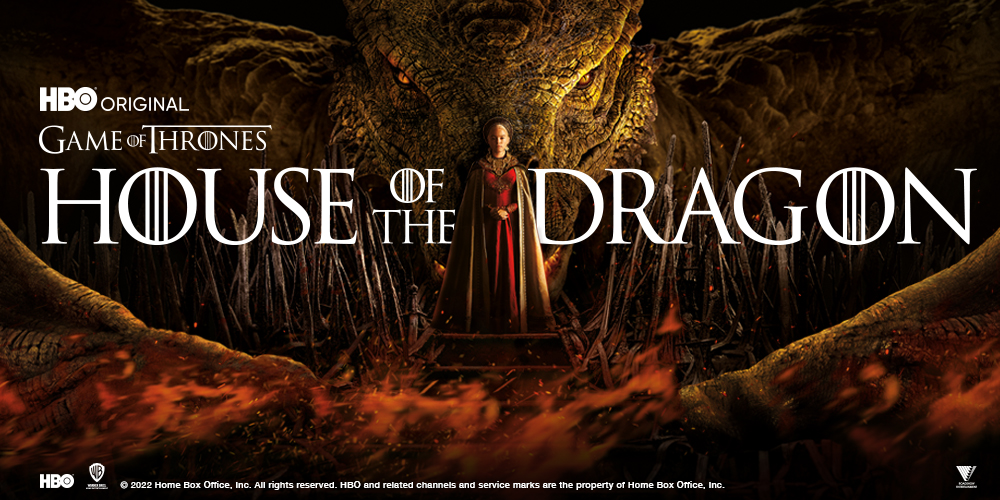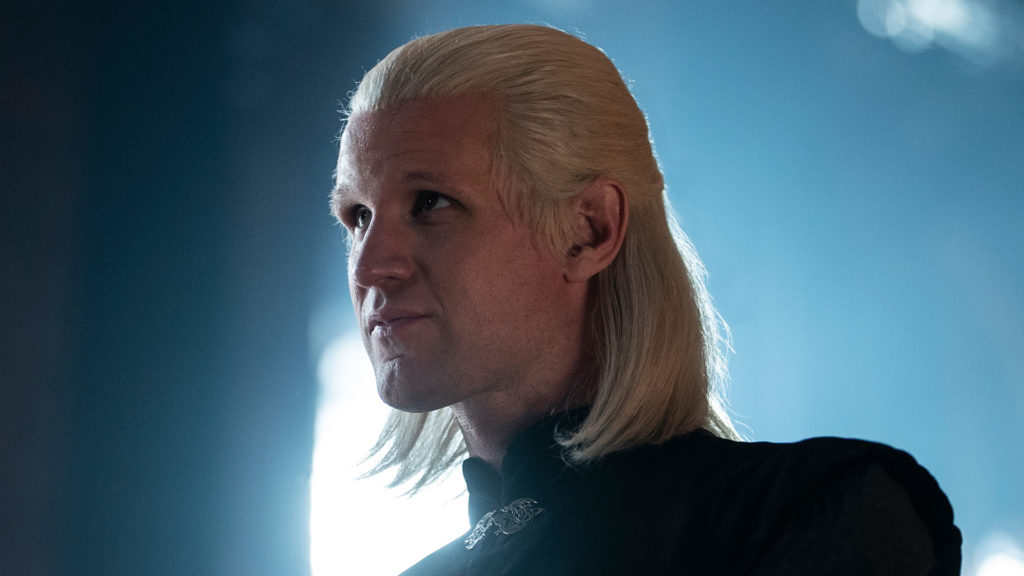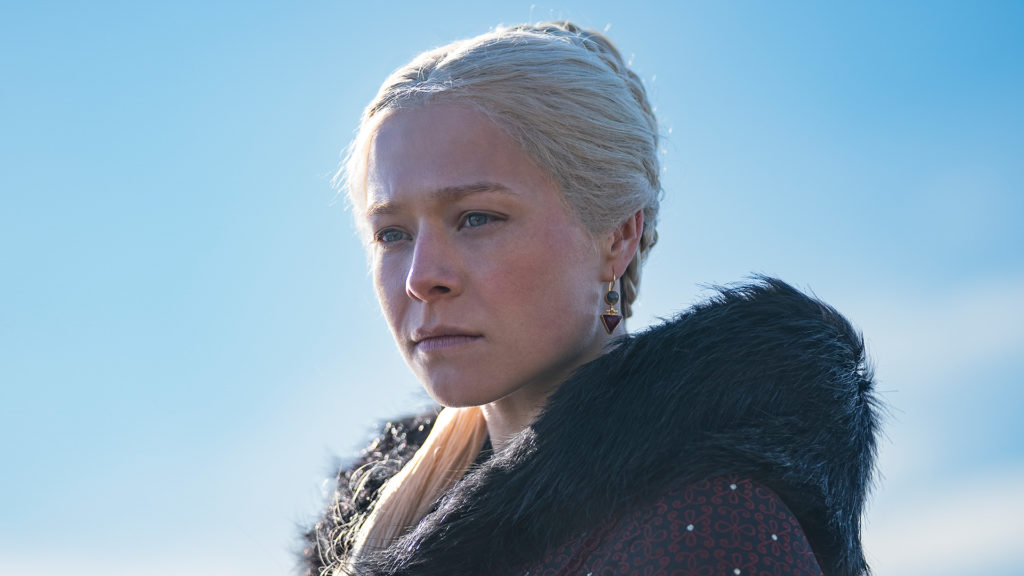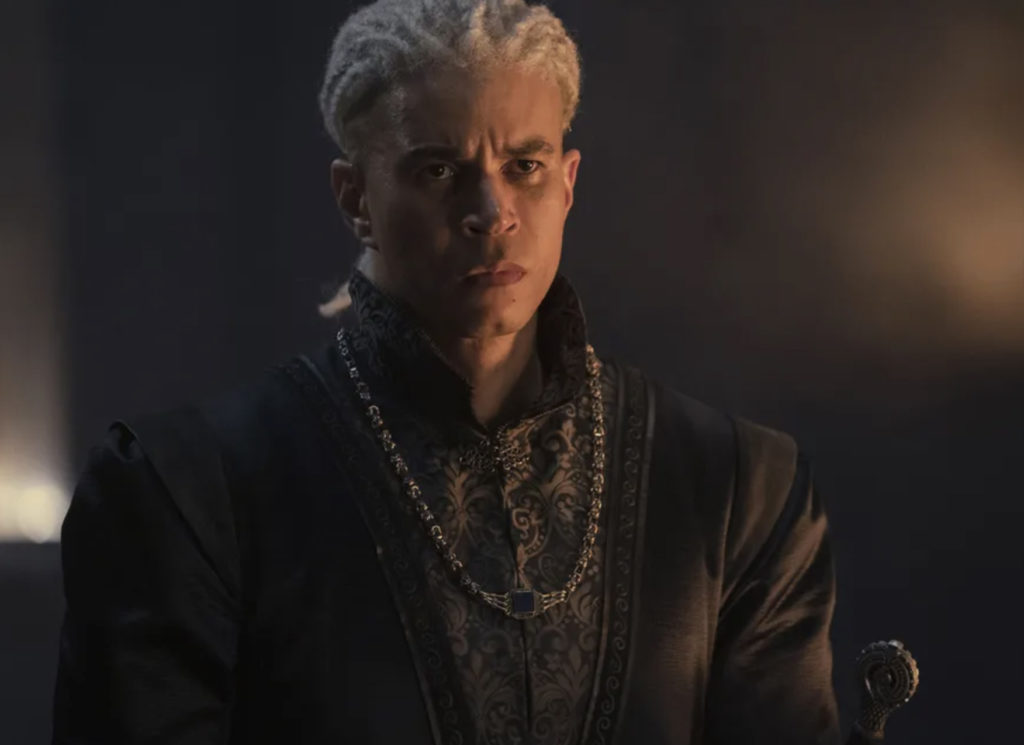
No Guest Found in this category
When HBO started looking to produce another fantasy television show set in the world of runaway success Game of Thrones, fans of George R. R. Martin’s series knew that the logical choice was to adapt the Dance of the Dragons, a civil war between rival branches of House Targaryen set well back in Martin’s fictional history. There were other candidates for the potential spin-off, including the rebellion which saw Robert Baratheon overthrow the Targaryens and set up the world we know from Thrones, and indeed HBO initially greenlit no fewer than four concepts. So far, though, only one has made it to the screen – the magnificent prequel House of the Dragon.
House of the Dragon is indeed an adaptation of the Dance of the Dragons, a turbulent period in the history of Westeros, but to discuss this properly – and to avoid spoilers – we will first take a look at how this part of Martin’s fictional history came about.

Milly Alcock as a younger Rhaenyra Targaryen
In 2013, Martin teamed up with friend and editor Gardner Dozois to produce a fantasy anthology called Dangerous Women. The book showcases fierce, capable female characters created by multiple authors, and Martin’s contribution was a novella called The Princess and the Queen. Presented as an extract from a longer book chronicling the history of House Targaryen, The Princess and the Queen tells the story of Princess Rhaenyra, heir to King Viserys, and Queen Alicent, Viserys’ second wife. The two become rivals when Alicent gives birth to multiple male heirs, bringing Rhaenyra’s claim to the throne into question. If this sounds familiar, it’s because The Princess and the Queen tells the story on which House of the Dragon is based.
Dangerous Women was a success, and so the next year Martin and Dozois followed it up with Rogues, an anthology focused on charismatic outsiders who disregard the rules. This time, Martin gave readers a novella set slightly before The Princess and the Queen, called The Rogue Prince. The new story expanded the role played by Prince Daemon Targaryen, Rhaenyra’s arrogant, ambitious uncle, and fleshed out the events that led up to the calamitous conflict in The Princess and the Queen. Both stories were drawn from Martin’s expansive notes on the history of House Targaryen, the first half of which were published as Fire and Blood in 2018. The relevant section of Fire and Blood contains everything from the previously published novellas and a little more, so overall there is far more source material for this period of Westeros’ history than any other. The Dance of the Dragons is a fully fleshed-out story second only to the Song of Ice and Fire novels, which made it the obvious choice of subject for HBO’s first spinoff.

Matt Smith as Daemon Targaryen
So, House of the Dragon is based on a section of Fire and Blood that was originally fed to fans in smaller pieces. This is relevant because of the approach HBO took to adapting the narrative – season one doesn’t cover the whole story. Instead, we start well before the “main action”, watching our central characters grow and become parents over the course of a slow-burn family drama. Viewers are given plenty of time to digest the politics of Rhaenyra’s rise and the complex, often toxic dynamics of the extended Targaryen clan. Sibling rivalries, tangled romances and friendships turned sour carry the dramatic weight of the story, building towards a dramatic precipice over which the show only plunges in the very last episode, leaving the characters and Westeros as a whole on the brink of a disastrous civil war.
In my view, this was absolutely the right way to go. Adapting season one mainly from The Rogue Prince and only venturing a short distance into The Princess and the Queen allowed House of the Dragon to develop the characters and weave the rich tapestry of interpersonal drama that gives the rest of the story such pathos. This did lead some viewers to critique the season as “slow”, but I am certain that hindsight will vindicate season one’s at times sedate pace. None of what is coming would be as meaningful without the setup we have been given, and on a character level, starting the story at a point where Daemon is at his most significant allowed Matt Smith to carry the first half of the season while the rest of the cast found their feet. Milly Alcock absolutely crushed it as young Rhaenyra, giving Emma D’Arcy plenty to work with in their strong embodiment of a more mature, adult princess. Kudos must also be given to Paddy Considine, who turned the somewhat two-dimensional version of King Viserys from the texts into a complex, conflicted monarch struggling to compensate for his own drawbacks. The cast absolutely made season one the success that it was; without them, the lower-stakes plotlines might not have engaged an audience used to the titanic good-versus-evil struggle that Game of Thrones became.

Emma D’Arcy as Rhaenyra Targaryen
Of course, adaptations rarely get everything right, and House of the Dragon did have a couple of rough points, with one scene in particular coming to mind for several reasons (book and television spoilers ahead, Supa-Fans). Halfway through the season, Rhaenyra is set to marry Laenor Velaryon, a young lord of impeccable pedigree who just happens to be queer. This upsets Ser Criston Cole, a knight of the Kingsguard, who was having an illicit affair with Rhaenyra until she made it clear that, contrary to Criston’s fantasies, they had no future together. Laenor’s lover, Ser Joffrey Lonmouth, points out to Criston that they share a secret – i.e. that they’ve both had affairs with one of the prospective newlyweds. It’s unclear if Joffrey was taunting or threatening Ser Criston in any way, but he clearly takes it badly – so badly that he beats Joffrey to death in the middle of the wedding.
On the whole, House of the Dragon is a remarkably faithful adaptation, even more so than the early seasons of GoT, which only makes the fact that this was a major deviation even more jarring. In the texts, Joffrey lives and continues to be Laenor’s lover for years after he marries Rhaenyra, and though his on-screen death ultimately sets up a plotline that gives Laenor a happier ending, some have argued that this is yet another example of the “bury your gays” trope in action. Joffrey’s death scene also exemplifies another contentious issue in the screen adaptations of Martin’s works – gratuitous violence.

Fabien Frankel as Criston Cole
Game of Thrones established a world in which random violence has no consequences, and House of the Dragon seems determined to show that Westeros has always been that way. Despite its fantasy setting, Westeros is strongly based on the feudal societies of medieval Europe, where things like murdering your jousting opponent because you’re upset he beat you or gutting another young lord because he insulted your family were considered brazen crimes – no different to today. They had huge and usually fatal repercussions for the perpetrators, so the idea that Criston Cole, a knight of the Kingsguard, could beat a noble-born guest to death in the middle of a wedding and not be executed for it is certainly closer to fantasy than history. While Martin’s work is indeed extremely violent, HBO’s more cavalier approach seems to be based on the belief that gore is part of the attraction.

John MacMillan as Laenor Velaryon
Sometimes, however, adaptations actually improve upon their source material, and House of the Dragon manages to do just that with the other end of the same storyline referenced above. In the texts, Laenor Velaryon eventually grows bored of Joffrey and moves on to a new lover, Ser Qarl Correy. Joffrey gets so jealous that he stabs Laenor to death in the marketplace and flees. In the show, with Joffrey already killed off, there’s no one to kill Laenor – so even though Rhaenyra and Daemon pretend to have done so, they actually arrange for Laenor and Qarl to flee into hiding in the Free Cities, presumably to live out the rest of their lives together. It’s the happiest ending for a queer couple that we’ve seen in this universe.
There were of course a few more divergences between text and show, but it’s hard to predict how important they will ultimately become. Some of the changes Game of Thrones made from the books completely altered the story; others proved inconsequential. House of the Dragon may well replicate this phenomenon, with small differences having bigger and bigger effects down the track, like a literary version of the butterfly effect. Alternatively, missing pieces of the story might get brought in at a more convenient time, allowing the plot to continue mostly unchanged. So far, the show has stayed very true to the texts, and with at least two more seasons of content left to adapt, I’m excited to see what they do next!
House of the Dragon is available to own now on 4K, Blu-ray & DVD









